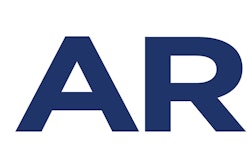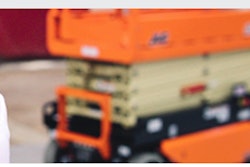
The North American rental market in the U.S., Mexico and Canada will growing to more than $70 billion by 2023, according to projections by the American Rental Association (ARA).
ARA Chief Economist John McClelland delivered this news at the the Access, Lift & Handlers (ALH) Conference & Awards program in San Diego, September 12.
Although he projected growth over the next four years, McClelland also mentioned challenges to this growth, several of which extend beyond the rental industry.
For instance, a 35% chance of a recession occurring in the next two years affects investments in many industries, including equipment rentals.
Residential investment, which McClelland called an important leading indicator for the rental sector, is down 2.7% in 2019. Manufacturing was down 7.7% in 2018, up 1.6% in 2019, and projected to drop 1.7% next year.
McClelland said that economists are still bullish on the rental industry in North America, just not as bullish as they might be without these indicators from residential investment and manufacturing.
Read next: Slower Growth Predicted for Equipment Rental Revenue, Now Forecast Through 2023
In several areas of the industry, the ARA found that demand is lessening. However, the supply has been contracting even more, so there is still an opportunity for rental businesses to generate revenue under these conditions.
This microeconomic situation within the rental market applies to scissor lifts and articulated booms under 80 feet. For other segments, including telescopic booms over 80 feet, supply has increased while demand has decreased, which contributes to less favorable conditions.
Two economic narratives from the U.S. and Canada
GDP impacts the investment in rental inventory, with less incentive provided from a boom economy or a fiscal stimulus. McClelland pointed out that the U.S. real GDP is expected to slow, from 2.9% last year to 2.6% this year and 1.8% in 2020. At the same time, unemployment will rise from this summer’s “cyclical low” at 3.5%, which also contributes to the likelihood of a recession.
One good piece of news from the broad, macroeconomic picture is the unflinching inflation rate, expected to remain at 2%, because of the strong dollar holding up against slowing global growth.
Interest rates in the U.S. are also a positive factor for rental. “Credit conditions are very good right now,” MClelland said. “The Fed interest level at 2% is still incredibly low. We’re still seeing the [delayed, positive] effects of quantitative easing from [former Federal Reserve chair Ben] Bernanke. It’s very easy to finance equipment.”
Canada’s economic growth shows signs of slowing down, as it stalled in late 2018 and early 2019. Real consumer spending in Canada is projected to rise at a steady 2%, a result of higher employment and the willingness of Canadians to increase their debt burdens.
Energy pipeline construction in British Columbia, along with a liquified natural gas project and the easing of oil output restrictions in Alberta all promise to help investments recover. Removal of U.S. import tariffs on Mexican and Canadian steel and aluminum should boost metal exports for Canada.
Although recession fears are mounting, recent history suggests that even if a recession hits, the rental industry will survive.
“Recessions aren’t necessarily bad in the rental industry because there still are projects to work on,” McClelland explained. “Who gets squeezed are contractors. If they don’t see all the work out there, they may get rid of their equipment. After the Great Recession, the contractor fleet was really decimated.”
New sources of growth driven by technology
 United Rentals' Dale Asplund takes questionsChris Wood
United Rentals' Dale Asplund takes questionsChris Wood
According to Asplund, 315,000 telematics devices are deployed across North America. The goal is to reach 450,000 by 2021. From the data on these devices, United Rentals knows how its assets are being used and whether they need maintenance. Asplund sees this as just the beginning of innovation.
“The data from the devices is only so good,” he stated. “The next generation of the technology will be about how you manage an asset remotely. You shouldn’t have to have someone on the site to tell how much gas is in the tank or not in the tank.
“Remote management will let customers become more productive, because they don’t need [as many] people to help them do what they need to get done,” he added.
This next wave of rental innovations is what United Rentals call “fluid solutions technology,” which includes pump telemetry, tank monitoring and remote monitoring for generators and all kind of assets.
Asplund also listed drones as another technology that will impact the industry. Surveying a jobsite by drone makes the site safer, with more accurate measurements, surveys and inspections. The drones also provide a layer of updated data every day to see the progress of a jobsite.
Discover more: [PODCAST] IPAF Urges Industry Collaboration on MEWP Accident Reporting Project to Promote Safety and Reduce Fatalities
Rental companies that update their equipment with these emerging technologies stay competitive, providing additional services to their construction customers.
Autonomous equipment, for warehouse management and in-the-field solutions, are “advanced solutions, available now,” Asplund stated.
“Our industry is a laggard,” Asplund said. “There will be a day when people will be forced to make a quick transition. The rental business has to grow and take share from the ‘own’ business.”
With new technological solutions that can extract additional value from rented equipment, providing on-demand solutions for customers, as well as maintain and manage fleets remotely, the rental industry has strong incentive to adapt.




















